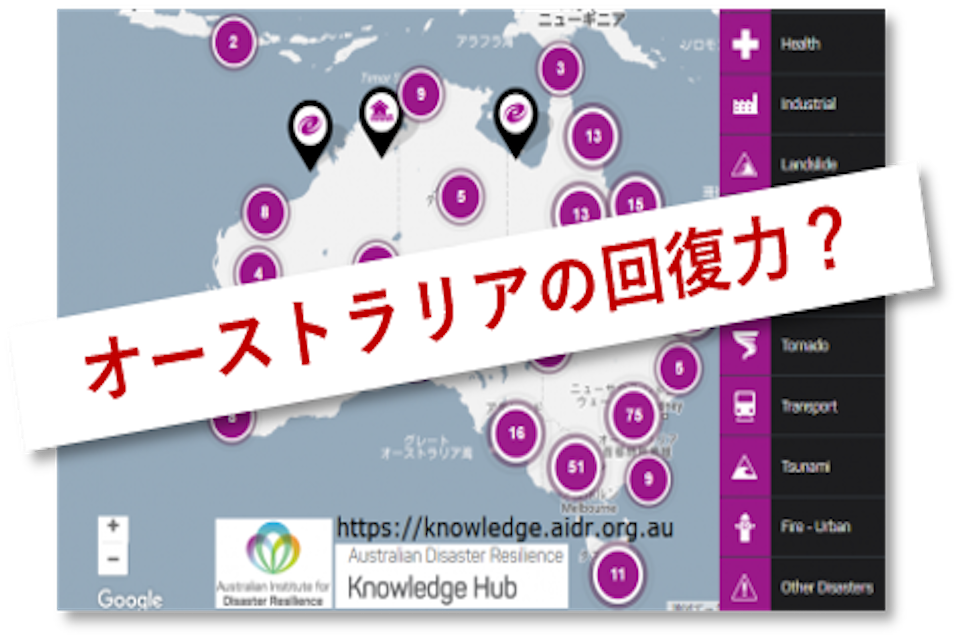03-6272-4372営業時間 9:00〜18:00
防災メディア

Disaster Resilience in Australia
2017/09/19
May 2017 was the launch of the Knowledge Hub at the AIDR, Australian Institute for Disaster Resilience. Some years ago, the organization changed its name to make “resilience” the main concern of the Institute instead of “response” or “risk” and vulnerabilities. All these words intersect at the time of crisis and the aftermath of recovery, but ultimately it is the people and organizations that have a reserve of resilience that can best sustain the stress and shock. The Knowledge Hub is an extension of this emphasis on local resourcefulness, social vitality and community interconnection. By collecting practical advice from past events in an organized way the Hub offers a single location for learning and boosting the resilience of local people, organizations and the wider emergency management community.
The AIDR which hosts the Hub is supported by the Commonwealth Attorney-General’s Department, AFAC, Australian Red Cross and the Bushfire & Natural Hazards CRC. According to the “about us” webpage the AIDR created the Hub in direct support of the 2011 National Strategy for Disaster Resilience. It goes on to say “Disaster resilience is described in the NSDR as the collective responsibility of all levels of government, business, the non-government sector and individuals. Where these sectors work together with a united focus and a shared sense of responsibility to improve disaster resilience, they will be far more effective than the individual efforts of any one sector.”
There are three parts to the AIDR organization: Knowledge Hub, Education for schools, and the quarterly AJEM (Australian Journal of Emergency Management). Given the broadly educational and promotional mission of the AIDR, the Hub is an important way for learners to find answers to their questions, to follow a course of training or add to their knowledge base, and for others to contribute the lessons taught by the ancient master, Experience.
There are eight areas at the Hub’s starting page: history (Australia disasters since 1800 records began), Handbook collections (diverse topics, self-contained standard references), AJEM (current and back issues in PDF), Emergency management library (30,000 titles available to look up and consult), Disaster types (characteristics, preparedness, useful methods to survive), Case studies and stories (living knowledge), Education and professional development (professional development events: program booklets, presentations, proceedings, summaries when available to share), and Research & innovation (university and corporate frontiers).
The audience for the Hub is not just emergency management people. The homepage has a tab for “education” with links to professional development, volunteer leadership, education for young people, education & training, and scholarships for volunteers. And the interactive map of disasters is accessible to non-specialists who want to see the disasters of a given place or the whole country. The map page lets viewers choose locations, type of disaster and specific date.
Unlike many professional associations and organizations that have difficult technical language and ideas, for the disasters in Australia the operational idea is to make their knowledge available and understandable to all people so the national knowledge base and awareness and, indeed, ownership is shared as widely as possible. The open-ended concept of the Hub will allow future lessons learned to be added to the common pool of experience for the benefit of citizens and emergency professionals alike.
サイエンスクラフトとは...
サイエンスクラフトは防災計画の作成や防災訓練支援を数十年に渡って行っているコンサル会社です。お問い合わせはこちらまで。




